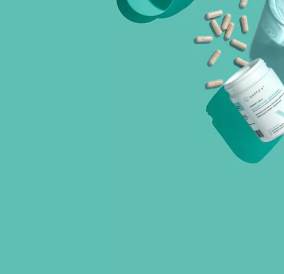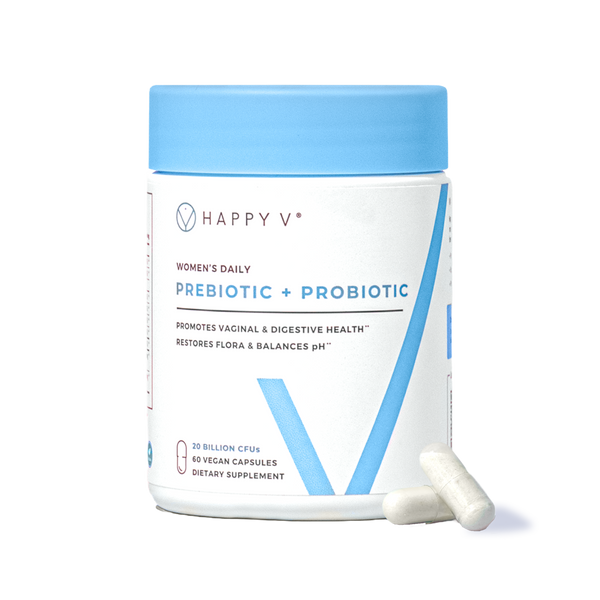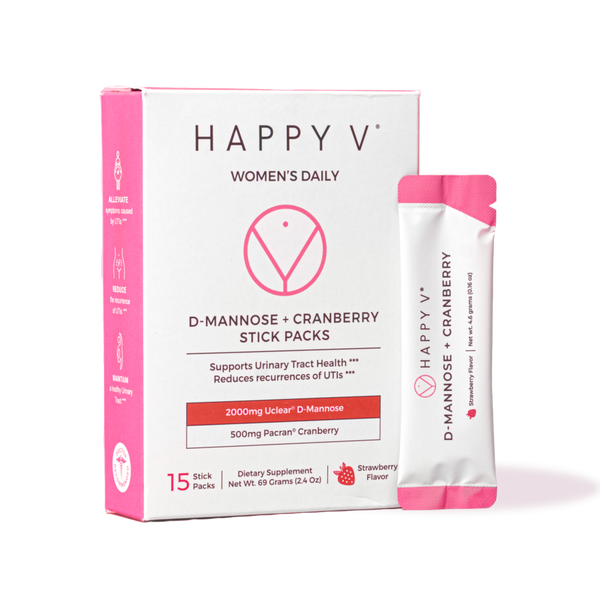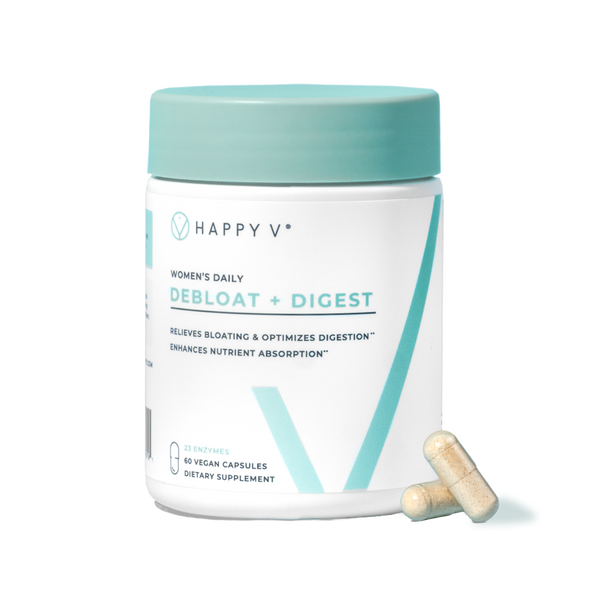- Fact Checked
- March 18, 2020
- 8 min read
Table of Contents
The more you dig into the endless stream of news, blogs, and articles that is the internet, the higher the chances are that you’re going to find potential health solutions to treating infections like BV, UTI’s, and yeast infections. But there also comes a time where you dig too much, and it’s like navigating through a maze: not knowing which direction to take and feeling like you are going in circles.
And just like mazes, when it comes to your vaginal wellness, there may be hundreds of potential moves you can make to address your BV or Yeast Infection symptoms, but it doesn’t mean that you’ll end up where you want.
What we are seeing more and more are “natural” solutions to problems that accompany infections: the fishy odor, discharge and itch that comes with bacterial vaginosis for example.
Let’s be straightforward with this.
Is hydrogen peroxide an effective treatment method for BV?
Our goal as women who are trying to recapture our vaginal health and stay healthy should be to maintain our health in the most reliable and safest way possible; it’s not worth putting ourselves at risk with one issue in order to mask another.
One of these myths is that hydrogen peroxide douching is the best treatment for bacterial vaginosis.
First off: Please don’t, that sounds painful.
Second. Although it may seem rational that douching with hydrogen peroxide can help because hydrogen peroxide is one of the compounds that lactobacillus probiotics produce as a natural defense against bad bacteria, they come with potential risks that may outweigh the benefits. Let’s dive deep into why this may not be the best route to treating your BV after all.
And with that, let’s have a little refresher (or intro) into what BV Is
What is Bacterial Vaginosis?
According to the experts at WebMD, bacterial vaginosis, also called BV, is a very common type of vaginal infection caused by an imbalance of the good and bad bacteria in your vagina.
The most important and abundant of the good bacteria is known as Lactobacillus. Through its production of molecules like hydrogen peroxide and lactic acid, it keeps the vaginal ph slightly acidic in order to prevent bad bacteria from growing and causing infection.
Be Aware: The fact that lactobacillus produces hydrogen peroxide is where this specific health myth stems from, just like how lactobacillus is abundant in yogurt and we hear stories of women putting yogurt dipped tampons in their vagina to treat their BV as a home remedy.
However, if there is a deficiency of lactobacillus, then there is less production of these essential natural defenses, and these bad bacteria will grow and cause bacterial vaginal infections, such as BV.
BV occurs most commonly in women who are in their reproductive age. It may manifest itself with symptoms such as a discolored vaginal discharge (white to grayish in color), vaginal odor, and a burning or itching sensation. However, sometimes BV may simply show no signs and symptoms at all.
What is a Vaginal Douche?
To douche means to ‘wash’ or ‘soak’ in French. The meaning explains the word very well. A vaginal douche is a kind of liquid solution, containing some medication, which is pumped into the vagina for the purpose of cleaning the vagina and its inner walls. Douches are usually sold in bags or pumps.
Most of the douches available in medical stores and pharmacies over-the-counter contain antiseptic solutions or fragrances. The practice of vaginal douching is very common as reported by experts at WebMD, who say that approximately 20-40% of American women use vaginal douches while they are between the ages of 15 and 44.
Is Vaginal Douching Safe?
Researchers have found that vaginal douching can disturb the balance of natural flora in the vaginal environment and cause an imbalance in ph levels. This makes the vaginal environment even more favorable for bacteria to grow which may lead to further complexities and more recurrent BV infections. So, this concludes that vaginal douching is not safe and it must be avoided.
What is a Hydrogen Peroxide Douche?
A hydrogen peroxide douche is a solution of hydrogen peroxide in water. Hydrogen peroxide is an antiseptic and hydrogen peroxide douches are usually available in the market in 3% concentration. Normally it is believed that a vaginal hydrogen peroxide douche can be used to treat bacterial vaginosis. The question is whether or not this true? Let’s find out.
Can I Use Hydrogen Peroxide for BV?
A study conducted by Verstraelen et al. (2012) concluded that hydrogen peroxide douches are not effective in treating bacterial vaginosis. This is because vaginal douches disturb the balance of good and bad bacteria in the vaginal environment and makes it feasible for bad bacteria to grow.
This means that instead of treating infections, douching can actually cause infections due to the probability of depleting good bacteria as well due to its antimicrobial properties. The liquid solution is also likely to deliver the solution too deep into the vagina and spread the bad bacteria into the urinary tract, causing further irritation and infection.
Researchers have concluded that antiseptic solutions may be effective for BV to some extent but not as much as oral antibiotic treatment prescribed by a healthcare provider.
So, we can conclude that hydrogen peroxide douches are not very useful in treating bacterial vaginosis. However, a lot more quality research needs to be done in this regard in order to investigate further.
Antibiotics for BV?
All the above content has concluded that hydrogen peroxide is not very useful for treating bacterial vaginosis. So, now the question arises that: if not hydrogen peroxide, then what?
This question has been answered by experts at Mayo Clinic who believe that antibiotic therapy is the first line treatment for bacterial vaginosis.
Doctors usually recommend antibiotics such as oral metronidazole pills, clindamycin creams or tinidazole tablets. However, antibiotics can make your BV reoccur due to the same reason douches can worsen B – their ability both to kill good and bad both bacteria.
Probiotics for Bacterial Vaginosis
Probiotics position themselves as the best possible option to treat the symptoms of bacterial vaginosis due to their ability to create the molecule we have been talking about this whole time: Hydrogen Peroxide. Probiotics create this molecule in order to inhibit the growth of bacteria, regulate pH and to displace pathogens, or bad bacteria, within the vagina so they don’t compete for prebiotics.
Bacterial vaginosis is a very common problem and it can occur in any woman who is in her reproductive age. Women usually do not pay attention to how important genital hygiene is and therefore end up with vaginal infections like bacterial vaginosis.
If you don’t take care of vaginal hygiene, then you should start there in order to avoid infections or the reoccurrence of infections. They can be really severe sometimes.
So, it’s better if you take the following measures for genital hygiene and keep your genitals clean, safe and sound.
-
Using probiotics more often.
Using probiotics for vaginal health can help by increasing the good bacteria in your gut and ultimately vagina too. Probiotics also help in strengthening your immunity and improving your overall health.
-
Chemicals can be harsh for your delicate vagina.
The genital area of a woman is extremely sensitive and the use of any harsh soaps or chemicals may cause a problem. It is better to wash the genital area with warm water only. There is no need for using chemicals because they will only worsen the problem.
-
Avoid using douches.
We’ve gone over this pretty extensively. Just Don’t do it.
-
Use protection during intercourse.
It is very important to take protective measures while having sex. It is preferable if your male sex partner uses a latex condom that doesn’t irritate your vagina, is chemical free, and so that any infections aren’t transferred.
-
Limit the number of sex partners.
Avoid having sex with different people on and off. This can really upset the balance of your vaginal flora because everyone has a different and unique flora. The more foreign microorganism you add to your microbiome, the harder it’s going to be to stay balanced. Pretty simple when you think about it.
You may find hundreds of ways to get rid of bacterial vaginosis on the internet. If you don’t know which one you should go for then at least now you know which ones you should definitely try at home.
The myth that hydrogen peroxide douches are the best treatment for bacterial vaginosis has certainly been debunked. If you experience symptoms of bacterial vaginosis, opt for more natural home remedies.
Home Remedies for BV include:
- Eating foods for vaginal health: like yogurt, fruits, and vegetables, apple cider vinegar, etc.
- Taking probiotic supplements
- Boric acid suppositories
- Tea tree oil: using tea tree essential oil may be effective due to its antibacterial properties
And always remember to seek medical advice first and treat you BV as soon as possible. If left untreated, BV can increase your risk of STIs, like HIV and genital herpes, and also cause pregnancy complications.
Our experts continually monitor the health and wellness space, and we update our articles when new information becomes available.
- Published on: March 18, 2020
- Last updates: February 08, 2025
Written by Daniella Levy
Edited by Daniella Levy
Our experts continually monitor the health and wellness space, and we update our articles when new information becomes available.
- Published on: March 18, 2020
- Last updates: February 08, 2025
Written by Daniella Levy
Edited by Daniella Levy









